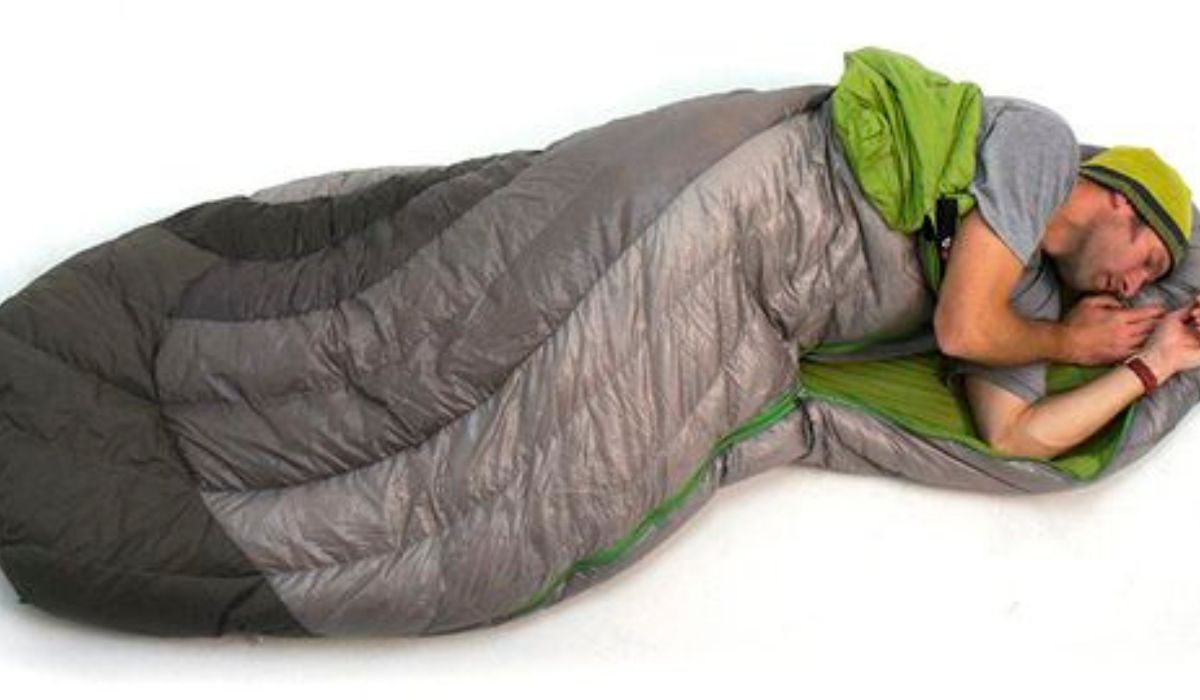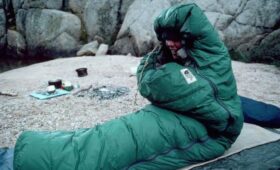
Have you ever struggled to attach your sleeping bag to your backpack before setting off on an outdoor adventure? It can be a frustrating experience, trying to find the best method to secure your sleeping bag and ensure it stays in place throughout your journey. But fear not! In this article, we will guide you through easy steps on how to attach your sleeping bag to your backpack, providing you with the knowledge and techniques to achieve a secure and hassle-free connection.
- Attaching a sleeping bag to your backpack is crucial for stability and ease of transportation during outdoor activities
- There are various methods to secure a sleeping bag to a backpack, including utilizing built-in straps and additional gear
- Waterproofing your sleeping bag is essential to protect it from moisture during your adventures
- Packing your sleeping bag efficiently ensures maximum space utilization in your backpack
- By following these steps and tips, you can confidently attach your sleeping bag to your backpack and embark on your outdoor journey with peace of mind
Methods for Attaching a Sleeping Bag to Your Backpack
When it comes to connecting your sleeping bag to your backpack, utilizing built-in straps is one of the best ways to ensure a secure and hassle-free attachment. These straps are specifically designed for this purpose, providing a reliable connection that keeps your sleeping bag in place throughout your outdoor adventures.
Step-by-step guide to using bottom loops and top straps:
1. Locate the bottom loops of your backpack near the bottom compartment. These loops are typically made of durable fabric or webbing.
2. Gather your sleeping bag and align the bottom edge with the loops.
3. Thread the loops through the loops on your sleeping bag, ensuring a tight fit.
4. Once the bottom loops are secured, move on to the top straps of your backpack.
5. Locate the top straps, usually found near the shoulder straps or the top of the backpack.
6. Attach the top straps to the top portion of your sleeping bag, making sure it is tightly fastened.
By following these simple steps, you can connect your sleeping bag to your backpack using the built-in straps, providing a secure and stable fit that won’t weigh you down during your outdoor adventures.
Tips for Attaching Sleeping Bag to Backpack
When preparing for a hiking trip, it’s essential to secure your sleeping bag to your backpack properly. This ensures easy access to your gear while keeping it stable and secure throughout your journey. Here are a few expert tips to help you attach your sleeping bag to your backpack seamlessly.
Waterproofing Strategy for the Sleeping Bag
One of the key considerations when attaching a sleeping bag to your backpack is protecting it from moisture. No one wants to sleep in a damp sleeping bag after a long day on the trails. To keep your sleeping bag dry and safe from the elements, consider using heavy-duty garbage bags, dry bags, or waterproof compression sacks.
“Protecting your sleeping bag from moisture is crucial for a comfortable outdoor experience. Utilizing waterproofing solutions such as heavy-duty garbage bags or waterproof compression sacks can provide an extra layer of protection.”
These waterproofing solutions act as a barrier, shielding your sleeping bag from rain, splashes, or accidental spills. Simply place your sleeping bag inside the waterproof bag or sack, ensuring a tight seal to prevent any water infiltration. This not only keeps your sleeping bag dry but also protects any other gear in your backpack from potential water damage.
The image above showcases a hiker securing their sleeping bag to a backpack, demonstrating the practicality of this attachment method for hiking adventures. As you can see, the sleeping bag is strategically placed and secured to maximize space and maintain balance.
By implementing these waterproofing strategies, you can be confident that your sleeping bag will remain dry and functional, even when exposed to challenging weather conditions. This way, you can enjoy a good night’s sleep and wake up refreshed and ready to take on new hiking trails.
The Art of Packing a Sleeping Bag
Efficiently packing your sleeping bag is crucial for optimizing space and ensuring a well-organized backpack. Whether you prefer folding or rolling your sleeping bag, each method has its own pros and cons.
Folding Method
“Folding your sleeping bag can provide a neat and compact result,” explains outdoor expert Laura Sullivan. “By methodically folding your sleeping bag, you can create a consistent shape that fits snugly into your backpack.”
When folding your sleeping bag, follow these steps:
- 1. Lay the sleeping bag flat on the ground.
- 2. Starting from one end, fold the bag in thirds or quarters, depending on its length.
- 3. Smooth out any wrinkles or unevenness along the folds.
- 4. Roll the folded sleeping bag tightly, pressing out any excess air as you go.
Rolling Method
“Rolling your sleeping bag can be faster and more flexible,” suggests seasoned hiker Mark Roberts. “This method is particularly useful if you need to pack and unpack your sleeping bag frequently throughout your trip.”
To roll your sleeping bag, follow these steps:
- 1. Lay the sleeping bag flat on the ground.
- 2. Starting from one end, tightly roll the bag towards the other end.
- 3. Press out any air that may be trapped inside the rolled sleeping bag.
Regardless of the method you choose, ensure that your sleeping bag is compactly packed to optimize space in your backpack. Avoid leaving any empty gaps or bulges that may affect the balance and stability of your load.
“When packing your sleeping bag, remember that space is precious,” advises Laura Sullivan. “By maximizing the efficiency of your packing, you can free up room for other vital camping gear.”
With these tips in mind, you’ll be able to pack your sleeping bag with ease, ensuring a well-organized and efficient backpack for your outdoor adventures.
Conclusion
Attaching a sleeping bag to a backpack is crucial for a secure and stable outdoor adventure. By following a few simple steps, you can guarantee a safe connection.
First, assess the compatibility of your backpack and determine the attachment points available. This will help you select the appropriate method for securing your sleeping bag. Additionally, ensure your sleeping bag is prepared for attachment by rolling or folding it neatly, optimizing its size and shape.
Consider the pros and cons of various attachment methods, such as utilizing built-in straps or using additional gear like sleeping bag straps. Choose the method that suits both your specific backpack and sleeping bag, guaranteeing a snug fit.
To protect your sleeping bag from moisture, invest in waterproofing solutions such as heavy-duty garbage bags, dry bags, or waterproof compression sacks. These will keep your sleeping bag dry and ensure its insulation throughout your hike.
Finally, pack your sleeping bag efficiently to maximize space and ease of access. Whether you prefer rolling or folding, make sure it is compact and well-packed within your backpack.
With these secure sleeping bag to backpack tips and easy attachment steps, you can embark on your outdoor adventures with peace of mind. Enjoy the great outdoors and make lasting memories!


